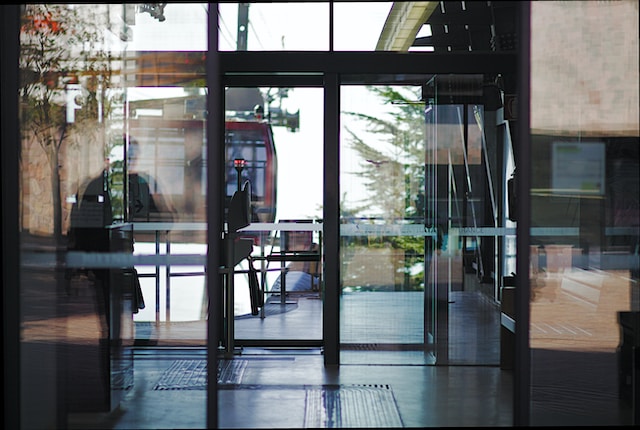Automatic doors are convenient and essential features in many buildings. They provide easy, hands-free entry into buildings and help ensure safety for people with mobility limitations.
But when they malfunction, it can be both frustrating and dangerous for a building’s occupants. Thankfully, there are methods for resolving issues independently before hiring an expert.
Damaged or Faulty Sensors
Sensors are a vital safety feature for automatic doors, as they prevent the door from closing on someone or something. However, like other parts of the system, they can become faulty.
If the sensors are blocked or damaged, they can trigger the door to open and close erratically. To help prevent these problems, it is essential to regularly clean your sensors and trim large branches or shrubs near the sensor paths. Direct sunlight can also interfere with the sensor signal, so it is essential to block some of the sunlight with a small object or piece of cardboard.
Moreover, the sensors can also be affected by extreme weather conditions. Ice or snow buildup on the sensors can cause the door to stop working entirely. The problem may also be caused by a power interruption, which could be easily solved by turning the power switch off and back on.
Dirty Track or Threshold
If there is an obstruction in the door’s path, it can cause the sensor to misread. The result of this could be unpredictable door opening and closing.
It is essential to remove debris from the area around the sensors regularly. Branches, rocks, leaves, and dirt can block the sensor’s vision and cause it to act erratically. Also, direct sunlight can sometimes interfere with the sensor beams and cause them to behave erratically.
If you’ve followed all these steps and your automatic doors still open and close independently, it may be time to call a professional automatic door repair New York.
Control Unit Malfunction
Over time, automatic door systems can develop mechanical or electrical faults. It can also be caused by various things, such as dust, insect nests, rodent chewing, and extreme weather conditions.
The sensors built into these systems all function interactively, and if they’re not working correctly, the doors may be left open or closed indefinitely. This can cause property damage and severe injury.
The best way to prevent this is to have a professional recondition the sensors regularly. This will help to ensure that the doors can recognize people, pets, and vehicles. It will also make the system run smoother and more efficiently. In addition, it will help to prevent any damage that the elements may cause. It’s important to note that a flipped switch can also cause power problems with an automatic door, so be sure to check that the on/off switch hasn’t been accidentally flipped.
Power Supply Issues
Automatic doors work with different sensors to notice the movement or presence of a person. If the system does not recognize a person’s movements, it is likely caused by a power supply issue or a sensor problem.
If the sensors are obstructed, the door may repeatedly open and close, trying to clear the path. This can lead to severe problems such as crush injuries or blunt force trauma. If this happens, it is essential to check and clean the sensor frequently.
This can result from physical harm, dust accumulation, or technical malfunction. It is also recommended to scan the door with an advanced scanner tool or multimeter to detect any errors. If the problem persists, it is best to contact a professional. Performing regular safety checks can prevent these problems from occurring in the first place. If the issue is not resolved immediately, it may require professional reconditioning or replacement of the sensors, motors, and control panels.



